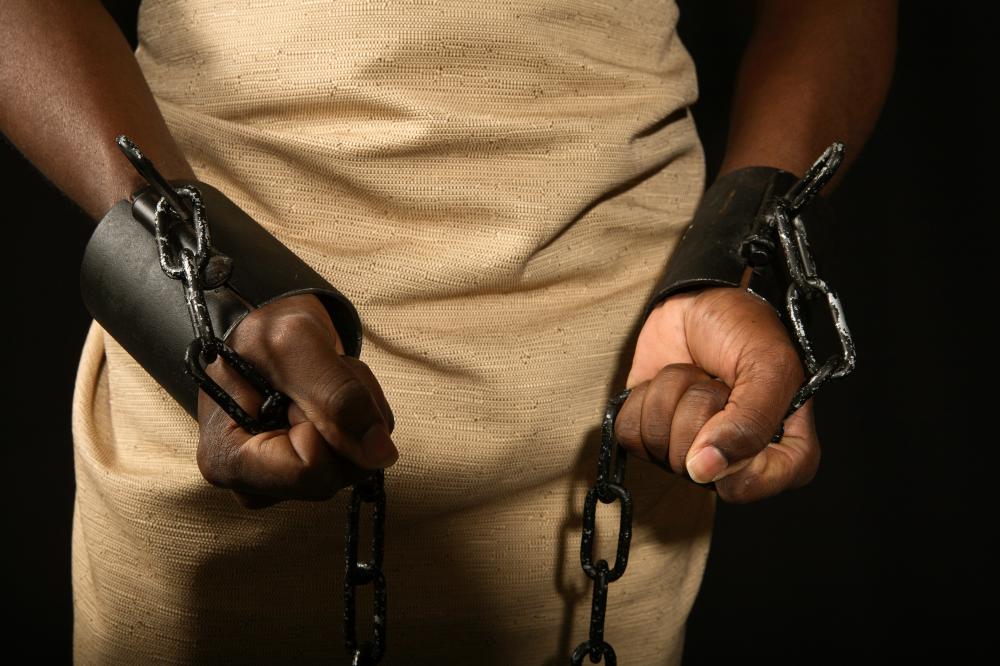At MyLawQuestions, we're committed to delivering accurate, trustworthy information. Our expert-authored content is rigorously fact-checked and sourced from credible authorities. Discover how we uphold the highest standards in providing you with reliable knowledge.
What is a Chain Gang?
A chain gang is a group of convicted criminals on a labor detail, usually outside of their place of incarceration. Chain gangs were mainly used in the American South in the late 19th and early 20th centuries. To prevent individual prisoners from escaping, the entire group was chained together by manacles around their ankles, wrists or necks. Chain gangs in America were mostly eliminated by the 1950s. Several sources link chain gangs with slavery practices of the South before the Civil War.
Inmate labor has been in use throughout history. The chain gang, however, is most often associated with the American South. Popular belief holds that chain gangs were intended as deterrents to crime, because potential lawbreakers would be “scared straight” by the sight of forced labor.

States such as Texas would hire out convicts to corporations or local governments, and the hiring fees or wages were paid to the state, not the convict. The convicts would work on privately owned work farms or on public works projects such as road construction. This process was called “convict leasing,” and it lasted well into the 20th century. After convict leasing was repealed by prison reform, states sometimes took over the work farms and continued the practice as state agencies.

Non-fiction works such as Michael King’s book “Texas Tough: The Rise of America's Prison Empire” demonstrate a link between chain gangs and slavery. After the Civil War, there was a backlash against freed blacks by many Southern whites. In some cases, black farm laborers were only allowed to work on Southern farms if they signed labor contracts. If they broke these contracts, they could be incarcerated and placed on chain gangs. Work farms were often located on former slave plantations, and convicts working on chain gangs were overwhelmingly African-American.

In the 1920s, a white convict named Robert Elliott Burns escaped from a Georgia chain gang and wrote a book about the brutal conditions he had endured there. The book was turned into a successful film, “I Am a Fugitive from a Chain Gang.” The book and movie provoked strong public sentiment against the chain gang system, and they are often credited with helping to eradicate the practice.
In the late 20th century, Southern states such as Alabama tried to reintroduce chain gangs. These plans were soon abandoned after public outcry and lawsuits that challenged the practice on the grounds of the Eighth Amendment, which outlaws “cruel and unusual punishment.” Convicts attempting manual labor while chained together can suffer lacerations, falls and injuries. Chain gangs were still used in many places around the world in the early 21st century, most often in developing countries.
The chain gang has appeared often in popular culture. Sam Cooke’s song “Chain Gang” was released in 1960 and has been covered by many other artists since then. The Pretenders released “Back on the Chain Gang” in 1982. Characters were sentenced to chain gangs in the films “O Brother Where Art Thou”, “Sullivan’s Travels” and “Blazing Saddles”, among others.
AS FEATURED ON:
AS FEATURED ON:













Discuss this Article
Post your comments